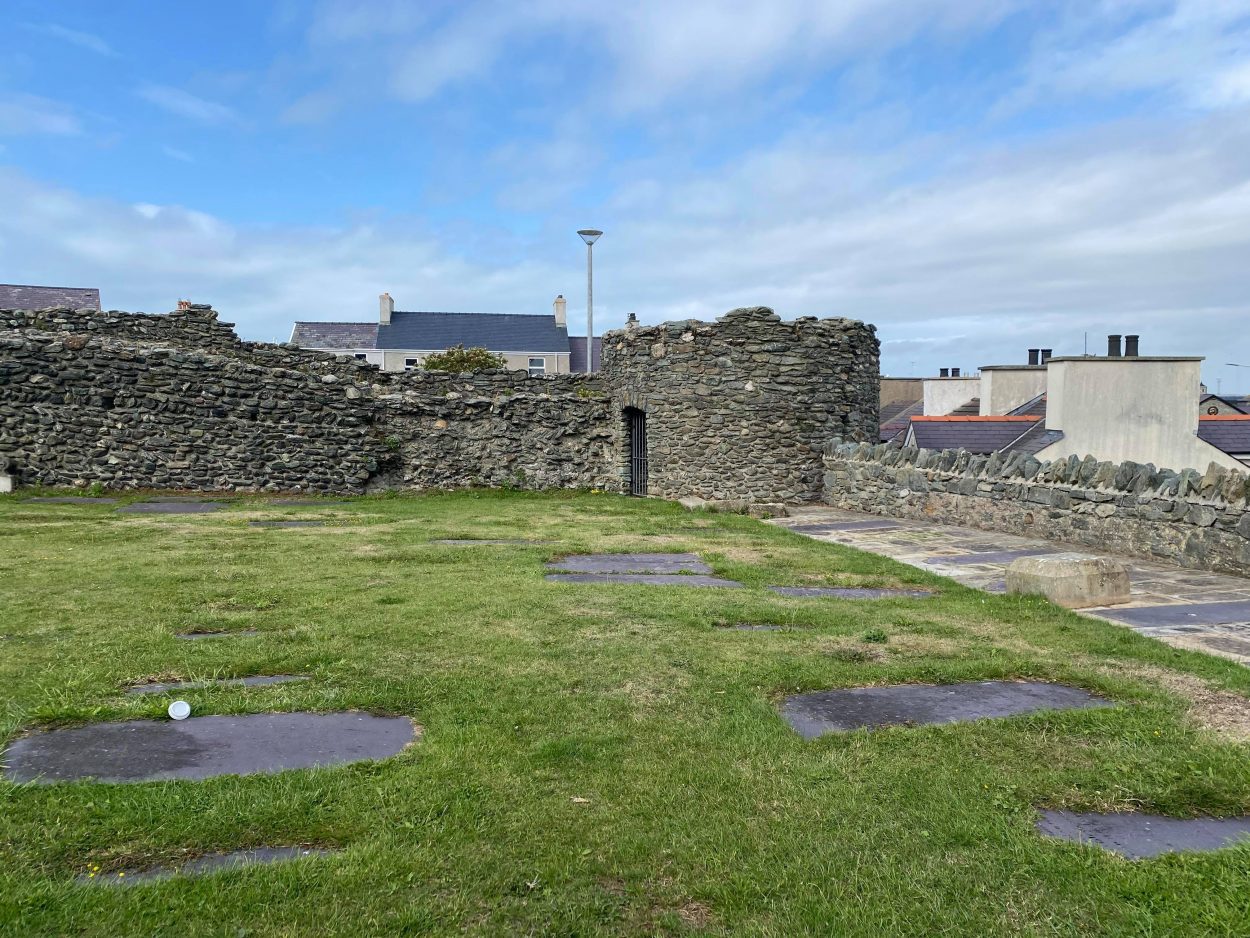Caer Gybi (named after it’s Welsh namesake “Caergybi”) is a late Roman fort, located in Holyhead on the western coast of Anglesey, Wales.
Prior to the Roman conquest of Wales, Anglesey was recorded in Latin as “Mona” and was supposedly an important religious centre for the Druids, and a haven for the tribes displaced by Roman expansion.
The lack of archaeological evidence has led many historians to suggest that the Romans used the Druids as a reason to “liberate” Anglesey, when in fact their motives were likely driven by the wealth derived from the rich copper mines found on the island.

The Romans administered the island from Segontium (Caernarfon), where they established a large fort in AD 77 or 78 that could hold a 1,000-strong regiment of auxiliary infantrymen. By the 3rd to 4th century AD, the garrison was reduced in size and instead, Segontium served to defend the coast against Irish raiders and pirates.
During this period, a three-walled coastal fort, consisting of 4m high walls and four corner towers was established in present-day Holyhead on Anglesey’s Holy Island, situated on a cliff face overlooking a small shingle beach. It is a near rectangular enclosure in plan, about 67m north-north-east to south-south-west by 44m.

The fort was supported by a look-out tower constructed on the top of Holyhead Mountain at Caer y Twr, to serve as an early warning system from seaborne attack on the islands western approach.
By around AD 393, both the fort and tower were abandoned, possibly in response to the redeployment of troops from Britannia during the revolt of Eugenius of Gaul, leaving the local Romano-British population of Anglesey to fend for itself.

In the 6th century AD, the old fort was given by King Maelgwyn of Gwynedd to Saint Cybi, who founded a monastery within the forts ruined walls. The Church of St Cybi still stands on the site today, with a small-detached chapel (Eglwys y Bedd), that reputedly stands over Cybi’s grave.
Header Image Credit : Markus Milligan





